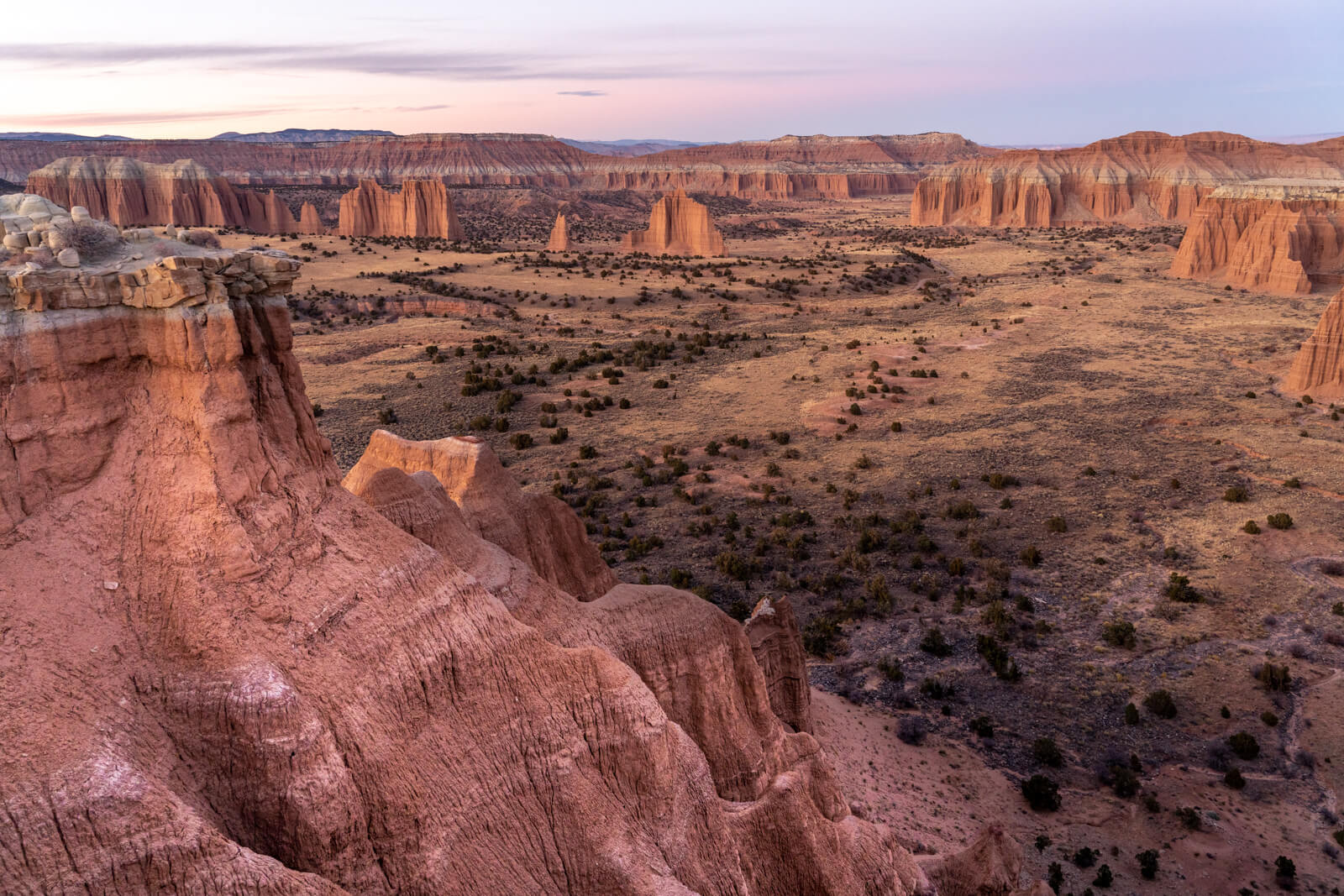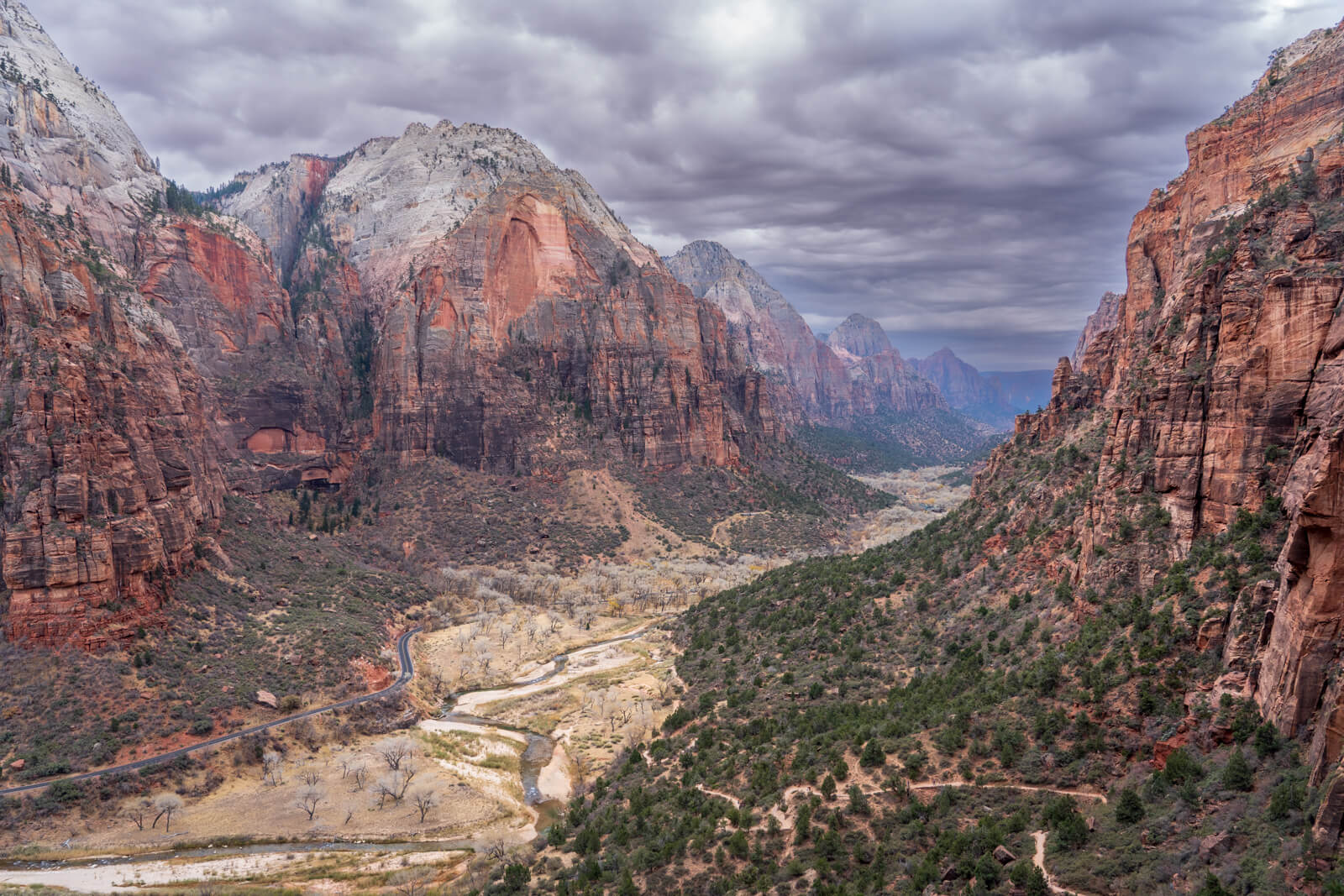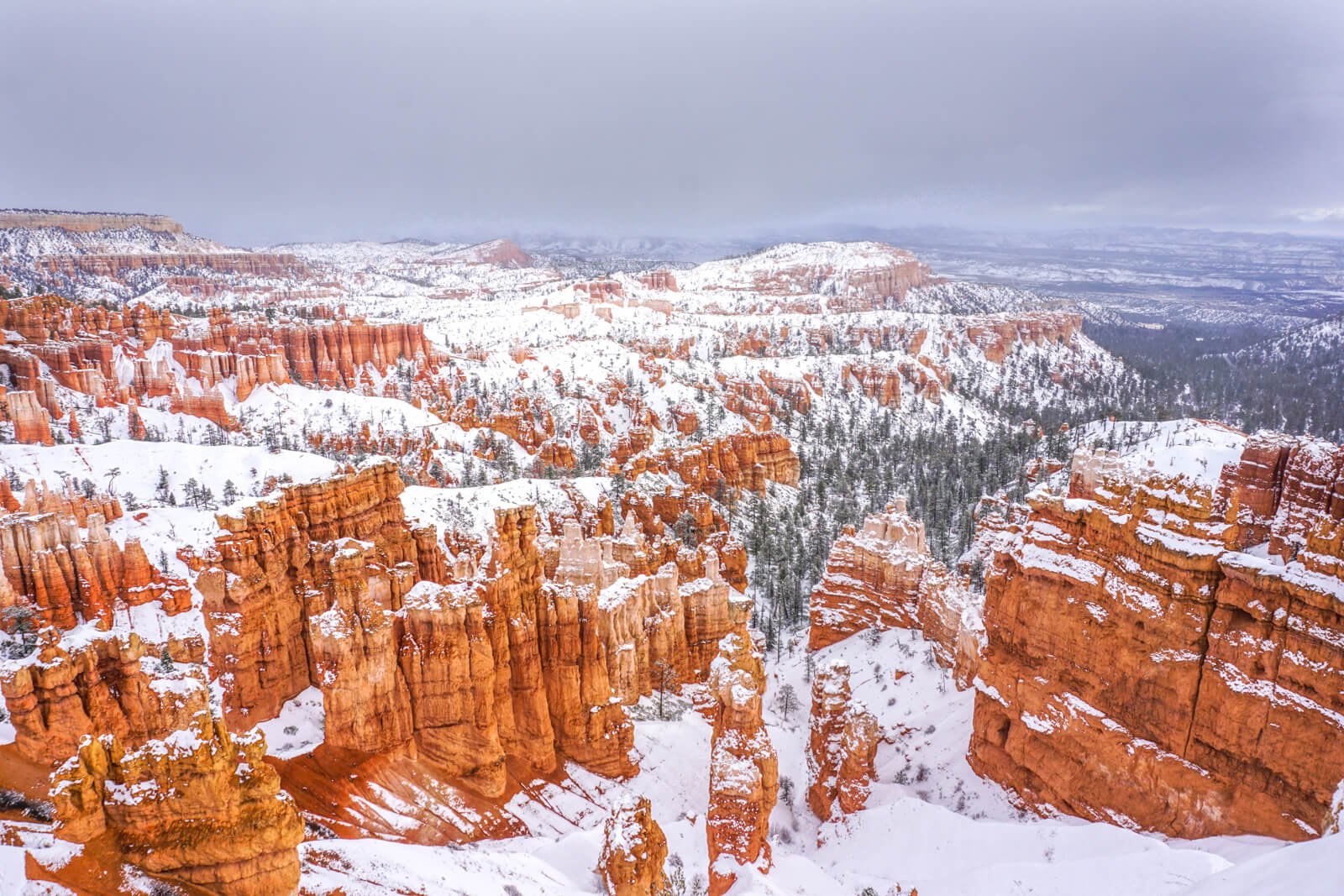The Mighty 5: An Insider's Notebook to Utah’s National Parks
- by Katie Botwin
The Utah Mighty 5 — glorious, powerful, awe-inspiring. The Mighty 5 might sound like your favorite team of superheroes, and in their own way, they are. The Mighty 5 are the five national parks scattered throughout Utah, and we’re excited to share their beauty with you. Read on to discover some of our favorite activities in these amazing places, and how you can discover the Mighty 5 in your own way.
After spending five months in our van, my partner Drew and I decided to run away from the snow and cruised down to Utah. We gave ourselves 1 month to explore these five national parks. Having just dabbled in these parks before, we were excited to spend some time exploring their depths, and discovering the secrets of these spectacular places.
If you plan on hitting the Utah Mighty 5 in the near future, be sure to snag a few of these products before going:

Arches National Park
You’ve probably seen an image of the iconic Delicate Arch— a sandstone structure that forms a natural wonder, perfectly framing the epic peaks of the La Sal mountains. With over 2,000 natural stone arches, petrified sand dunes, and epic desert views, Arches National Park is sure to take your breath away.
Arches National park is rated as the 12th most popular National Park, and when you’re there, you can tell. The desert means blistering summertime heat, so most visitors come in spring or fall and line the roads with RV’s and tour buses. Not only that, but with Arches’ close proximity to Moab and breathtaking natural arches accessible by hiking only a short distance, Arches National Park is welcoming to any level of adventurer. It’s crowded for a reason, so don’t let the crowds dissuade you from hiking amongst the arches.
Favorite Hike:
The hike to Delicate Arch, at sunset! While living on the road, Drew and I always say the sunset is our favorite TV show, and Delicate Arch is the place you’ll want to sit back and watch the magic. It’s a 3.1 mile out and back trip that takes you to the base of Delicate Arch, a sandstone, freestanding arch. If you’re prepared for the 613 feet of elevation gain, this trail is great for any hiking level. When heading up for sunset, make sure you pack layers and a headlamp in addition to snacks and water!

Canyonlands National Park
Just 30 minutes away from Arches lies the less crowded but undoubtedly epic Canyonlands National Park. We’re not sure if it’s the extra drive-time to the entrance or that it doesn’t have any easily accessible natural wonders like the Delicate Arch, but the second we drove into Canyonlands it felt like a breath of fresh air. If it’s namesake doesn’t clue you in on the wonders found within its boundaries, endless canyons offer countless opportunities for climbing, biking (check out info on the White Rim Trail here!), and hiking.
The main area of Canyonlands, the Island in the Sky, is the most popular area of the park. It’s home to epic overlooks and trails where you can walk right up to the edge of sheer cliffs that are hundreds of feet high (we don’t recommend that, though!). Even better, the Needles, the other region of Canyonlands, is even less crowded. About a 90 minute drive from Moab will get you to the Needles, but less crowds paired with the towering, colorful spires this area is known for make it well worth the trek.
Favorite Hike:
Though I love the famous Mesa Arch for sunrise (a .6 mile hike that you’ll find yourself sharing with way too many aggressive, tripod-swinging photographers) and the Murphy Trail Loop as an epic 10.1 adventure hike that takes you down into the canyons, I’m sharing the Grand View Point trail. This 2-mile round trip hike begins at Grand View Overlook and winds along a cairn marked path to epic views of Junction Butte, with sheer cliffs and desert landscape along the way. Make sure to stay a safe distance from the edge!

Capitol Reef National Park
If you’re into an infinite amount of stars dotting the sky above and fewer crowds than you’ll find in many national parks, Capitol Reef National Park is the place for you. As an International Dark Sky Park, Capitol Reef can be just as exciting after dark as it is during the day — as their saying goes, “half the park is after dark!”
Capitol Reef is remote — we drove along the winding dirt roads for miles without passing another car. The park surrounds a Waterpocket Fold, a nearly 100-mile long warp in the Earth’s crust, that is still eroding today. Not only is this region teeming with geologic history, but people have called it home for thousands of years. Petroglyphs and orchards (you can pick fruit at certain times of the year!) remain in the park, allowing you to learn about the rich cultural history of this area.
Favorite Drive:
If you’re in for a bit of a rough road, I recommend adventuring into Cathedral Valley (make sure you have a car with decent clearance!). There are a few ways you can get into this area, but our favorite is driving to Cathedral Valley Campground from highway 72. Not only will you see breathtaking milky way views, but you can hike along the road to the base of the Monoliths this park is famous for. Then, drive out past the Temple of the Sun and the Temple of the Moon, both sure to leave you amazed. Cathedral Valley is a free campground with designated sites and pit toilets, but it is pack-in pack-out and has no running water—make sure you come prepared and Leave No Trace!

Zion National Park
Founded in November, 1919 as Utah’s first National Park, Zion is the fourth most visited National Park in the United States. It’s packed with jaw-dropping vistas, heart-racing hikes, and desert walls that rise above you like skyscrapers.
Zion has a mandatory shuttle service to accommodate the millions of people who visit every year. Though you can drive on the highway through the park, the Zion Canyon Shuttle will become your best friend while visiting. Make sure to plan ahead for the crowds, or else you’ll be searching for a parking spot in the shuttle lot!
The park is filled with both geologic and human-crafted wonders. Meandering through the sandstone cliffs is the Zion-Mt. Carmel Highway and Tunnel, a 1.1 mile long tunnel built in the 1930s with the only light coming from sporadic windows and the headlights of oncoming cars. Also, Zion has been home to people for over 10,000 years, and archaeological sites can be found throughout the park. From condors soaring through the canyons to rock climbers slowly ascending the sandstone walls, creatures from all walks of life call Zion home.
Favorite Hike:
From the Narrows to the Subway, Zion comes with some of the most unique trails found in a national park. I’ll always love Angel’s Landing, a 5-mile round trip trail that takes you along a steep (as in, over 1000 feet at some sections!) drop-off with bolted chains for you to hang onto for dear life (literally). Not only that, but this trail comes with 1630 feet of elevation gain. All that said, it’s well worth it, which is why the Angels landing trail is often packed with visitors. We recommend going in the very early morning, or during the less popular months of the year — or you’ll find an hour-long wait to get onto the chain section of the hike.

Bryce Canyon National Park
Let’s chat about hoodoos. Hoodoos come in all shapes and sizes, and form from millions of years worth of erosion creating the protruding spires you see today. With the highest concentration of Hoodoos found anywhere on Earth, it’s no wonder Bryce Canyon was established as a national park. Bryce serves as the home for these unique structures, and has a variety of trails ranging in difficulty that allow visitors to walk below, in-between, and above the otherworldly hoodoos.
We all love nature (or you will soon after visiting the Mighty 5!), so we recommend hopping on the free shuttle to help reduce vehicular congestion and exhaust in the park. Also, although you might need to layer up, we recommend checking out Bryce National Park in the winter. Not only are there less crowds, but the snow against the glowing hoodoos creates an astounding juxtaposition of color you won’t see in many places in the natural world.
Favorite Hike:
The Navajo Loop and Queen’s Garden Trail offers a chance for you to get up close and personal with the hoodoos. At 2.6 miles with 623 feet of elevation gain, this trail is rated as moderate, but it’s well worth the sweat! This trail offers countless angles of the orange and pink hoodoos against a glowing sky, and is sure to leave you in awe of this enchanting desert landscape.
After writing this, I’ve come to believe that the Mighty 5 might in fact be a team of superheroes. These incredible landscapes offer everything from tight slot canyons you can wander through to towering arches shaped by the pure force of nature. So pack up your car, lace up your dirt-caked boots, and go discover what this amazing world we live in has to offer. We hope that after reading this you feel inspired to travel to even one of these extraordinary parks, to become a steward of these natural wonders, to practice the 7 Leave No Trace Principles, and to stay warm on your next adventure!
Check out some of our other blogs below:


